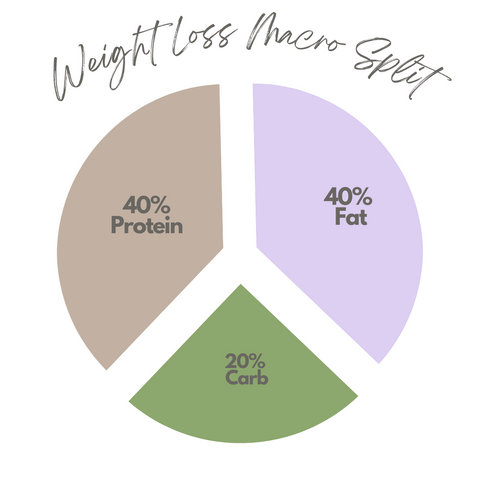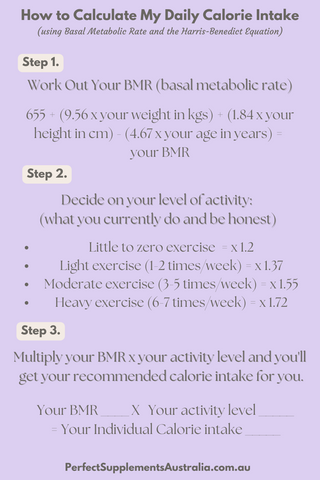Share
A 'macro' is short for macronutrient, which simply means a nutrient that you need in a large amount for your body to function properly.
The 3 macros are:
- Protein
- Fat
- Carb (carbohydrate)
Your body cannot make these macronutrients, so it has to get them from the food you eat.
Calories are obtained via these 3 macros and can be broken down as follows:
- Carbs: 4 calories/g
- Fats: 9 calories/g
- Protein: 4 calories/g
Many of the foods you can eat contain a combination of macros and often are higher in a certain macro. There are exceptions to this though, where certain foods might contain fairly equal parts of each macro or 2 main macros.
An example of three macros in one food would be full-fat yoghurt. Full-fat yoghurt contains fat, carbs and protein.
Examples of Carbs
- Wholegrain (complex) and refined (simple) grains and also pseudo-grains (quinoa)
- Vegetables (some veg are higher in carbs, some are moderate and some are low) See our blog here for the full breakdown of carbs + calories in both fruits and veg)
- Fruits (some fruits are higher in carbs than others)
- Beans, legumes and pulses
- Dairy products (milk, yoghurt)
Examples of Protein
- Red meat (lamb, beef etc.)
- White meat (pork, chicken, turkey)
- Fish & seafood
- Dairy (cottage cheese, yoghurt, cheese, milk, whey protein)
- Eggs
- Hydrolyzed collagen and Bovine gelatin
- Plant Protein powders
- Whey protein (concentrate and isolate)
- Bone broth
- Tempeh & tofu (not complete* protein)
- Nuts & seeds (not complete* protein)
- Beans & pulses (not complete* protein)
*When you combine these they can make up a complete protein, like the Perfect Plant Protein powder. That is a complete protein that contains the 9 essential amino acids.
Examples of Fats
- Eggs
- Avocado and avocado oil
- Coconut and coconut oil
- MCT oil
- Olives and olive oil
- Nuts and seeds
- Ghee and butter
- Rendered animal fats (duck fat, lard (pig fat) and tallow (beef fat)
- Fatty fish (sardines, salmon, herring and anchovies)
Macro Split
You nay have heard of a 'macro split' before or a macronutrient ratio, well they are the same. It just means the percentage of each macronutrient (macro) that you're eating.
In this blog, we will teach you about macro split and how to calculate the right ratio for you, using the Harris-Benedict Equation. It is super easy!
The examples below are only examples, please use the equation to calculate your specific requirements for your individual needs as they may vary from person to person depending on their age, activity level, height and current weight.
Note: listen to your body too as certain macros (like fat) in higher ratios may not suit everybody. Some people cannot digest large amounts of fat and are better with higher carb and protein. We are all different.
Example of a common macro split:
- 40% calories from carbs (40% carb)
- 30% calories from protein (30% protein)
- 30% calories from fat (30% fat)

A common macro split for weight loss:
- 40% of calories from protein (40% protein)
- 40% of calories from fat (40% fat)
- 20% calories from carb (20% carb)

How to Calculate Your Macros
You can find various online macro calculators, but the problem with most of them is they are all so different (inconsistent with their data). This will have you left feeling confused. 😐
All you need to do is a simple equation (see below) and you will know your numbers. It's called the Harris-Benedict Equation, this helps to calculate your BMR.
Your basal metabolic rate (BMR) is the number of calories that you burn daily without moving. It's the minimum amount of calories that you need to consume to remain at your current weight.
This calculation is based on your own personal data (your gender, height, weight and age). The more honest you are with the data, the more accurate the equation for you and therefore, you will get the right macros for your body and goals.
To get to the macro split, you'll need to also work out your daily calorie intake by multiplying your BMR x your activity level (in the steps below).
Step 1. Work Out Your BMR (basal metabolic rate)
Look at the guide below and take out a pen and note pad (or the notes in your phone) to do your own calculation:
655 + (9.56 x your weight in kgs) + (1.84 x your height in cm) - (4.67 x your age in years) = your BMR
Example (me currently):
655 + (9.56 x 68kg) + (1.84 x 175cm) - (4.67 x 42 years of age) = 1430.86 BMR
Step 2. Work Out Your Daily Calorie Intake
To work out the next step of this process, you'll need to complete the next action.
Your BMR x your activity level.
Choose from the Activity Levels Below that Best Describes You Currently:
- Little to zero exercise = x 1.2
- Light exercise (1-2 times/week) = x 1.375
- Moderate exercise (3-5 times/week) = x 1.55
- Heavy exercise (6-7 times/week) = x 1.72
The equation for you will look like this (fill in your own data):
Your BMR x your activity level
Your total calories per day = _______________
Example (me currently):
1430.86 x 1.55 (moderate exercise) = 2,217 calories per day to maintain current weight
Note: as women, our weight can fluctuate throughout the month so you may need to adjust accordingly, depending. Let's say you're still in your cycling years (menstrual), and you're keto/carb cycling (doing keto first half of cycle and adding some complex carbs in the second phase, your macro split will look different during these 2 phases.
This is a more complex strategy in which we will save for another time.
Another thing to note is if you are weight training (an incredibly beneficial practice for most women), you may need to increase your protein intake. The reason for this is that you are working your muscles so they will tear and the protein helps to repair them so they grow.
The recommended intake of protein for women who train is 1.7-1.8g of protein per kg of body weight.
Example (me currently): 68kg x 1.7g of protein = 115.6g of protein required daily
Below is an infographic that we created on the overall process to calculate your calorie intake. Be sure to check out our related blogs in the links below ⬇️

Check out Our Related Blogs ⬇️
- Carbs and Calories in Fruit and Vegetables
- The Misconceptions about Protein
- The Truth about Protein for Women
References:
https://www.precisionnutrition.com/how-to-count-macros
https://iamherbalifenutrition.com/healthy-weight/count-best-macronutrient-ratio/
https://pubmed.ncbi.nlm.nih.gov/25028958/
https://www.womenshealthmag.com/uk/food/weight-loss/a706111/counting-calculate-macros/
https://www.girlsgonestrong.com/blog/articles/muscle-building-nutrition/#:~:text=If%20your%20goal%20is%20to,kilogram%20of%20bodyweight%20each%20day.
https://pubmed.ncbi.nlm.nih.gov/12242311/
Disclaimer: the information in this article is intended purely as information and not health advice. It is not intended to treat, diagnose, prevent or cure and one should always seek expert advice from their trusted health practitioner.




